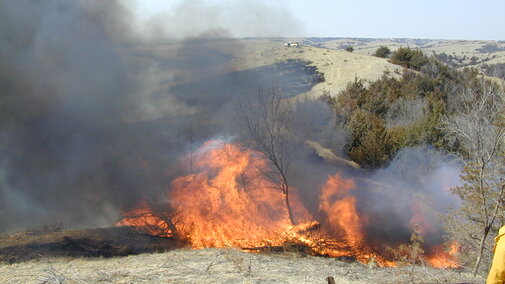Snow for Alfalfa
By Brad Schick
There hasn’t been much snow yet this year across the state or at least any that has stuck around. For alfalfa, snow is a winter gift.
Snow helps alfalfa survive the winter. Plain and simple. A warm fall has allowed some alfalfa to winterize very well and prepare for consistent cold temperatures. They do this by putting high concentrations of nutrients in the roots and crown to withstand temperatures down to 5 degrees.
Air temperature is colder than soil temperature. So even if the air is well below zero degrees, the soil will not be. With a layer of snow acting as insulation on the soil surface, the soil and roots of the alfalfa will be much warmer than bare soil and the air temperature. This layer of snow also protects the moisture in the roots and soil from being lost to evaporation. This is especially important with new seedings of alfalfa or alfalfa and grass mixtures which need to maintain root moisture. If the soil does dry out, desiccation, frost heaving and greater swings in soil temperature can result in higher levels of winterkill across a stand.
Having some stubble at the end of the growing season is a great way to catch this much-needed snow. If a late season harvest is unavoidable, cut high to ensure snow trapping stubble can still function. In an ideal situation, this snow insulation, winter hardy variety selection, and — this is so important — alfalfa given the chance to properly winterize in the fall, will keep winter kill to a minimum.
Snow is a great insulator and can help alfalfa and grasses survive winters. Even if you aren’t dreaming of a white Christmas, your alfalfa probably dreams for it every year.
Prescribed Burning for Control of Cedar Trees
Eastern red cedar trees are a significant and expanding problem across many pasture and rangeland acres in Nebraska. When fire is planned and controlled properly, it can be a very useful tool to control these unwanted plants.
It is estimated that a single cedar tree with an eight-foot diameter could reduce forage production by three pounds. If you had a density of 200 trees per acre, that would translate into nearly one-third loss in forage production because of the effects of area coverage, moisture use and shading.
In addition to cedar tree impacts on forage production, excessive cedar trees will also dramatically alter habitat for many wildlife species that are adapted to a grassland environment. While mechanical cutting or shredding and herbicides are options to control cedar trees, a prescribed burn is by far the most economical approach.
Safe and controlled prescribed burns don’t just happen. It takes preparation, planning and an understanding of how fire reacts in certain weather conditions, with particular fuel loads, and on various types of topography.
You can begin to learn how to conduct a safe, legal and effective prescribed burn by attending one of several prescribed fire training workshops held during January through March. Pheasants Forever, the Nebraska Game and Parks Commission, and other conservation partners sponsor the workshops that will be held at various location across Nebraska.

